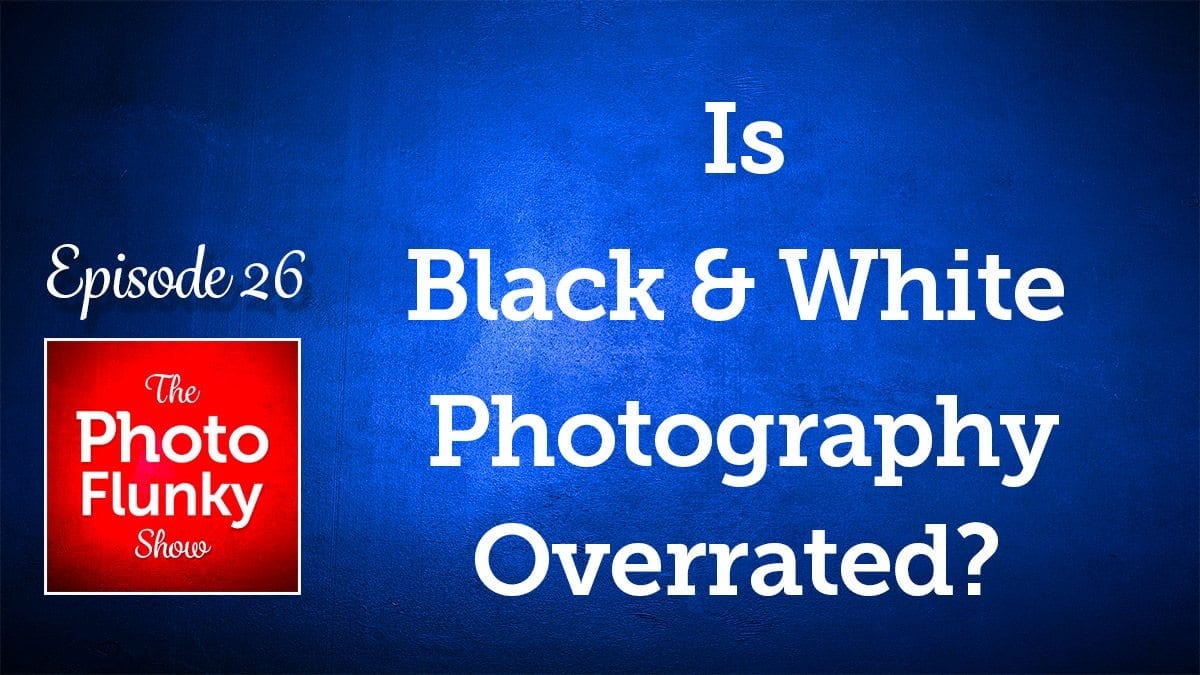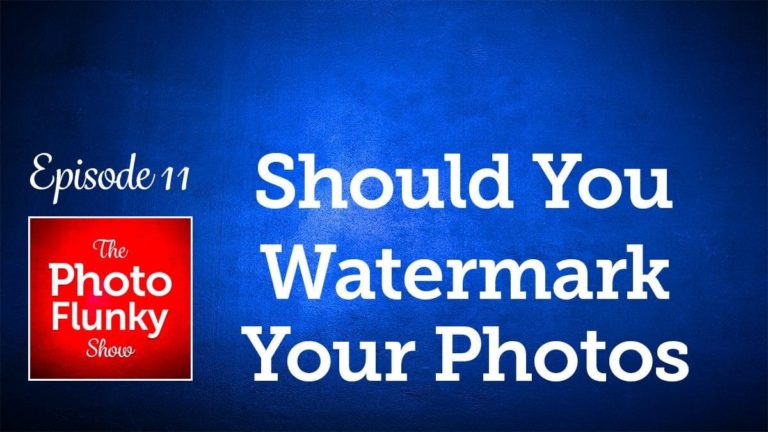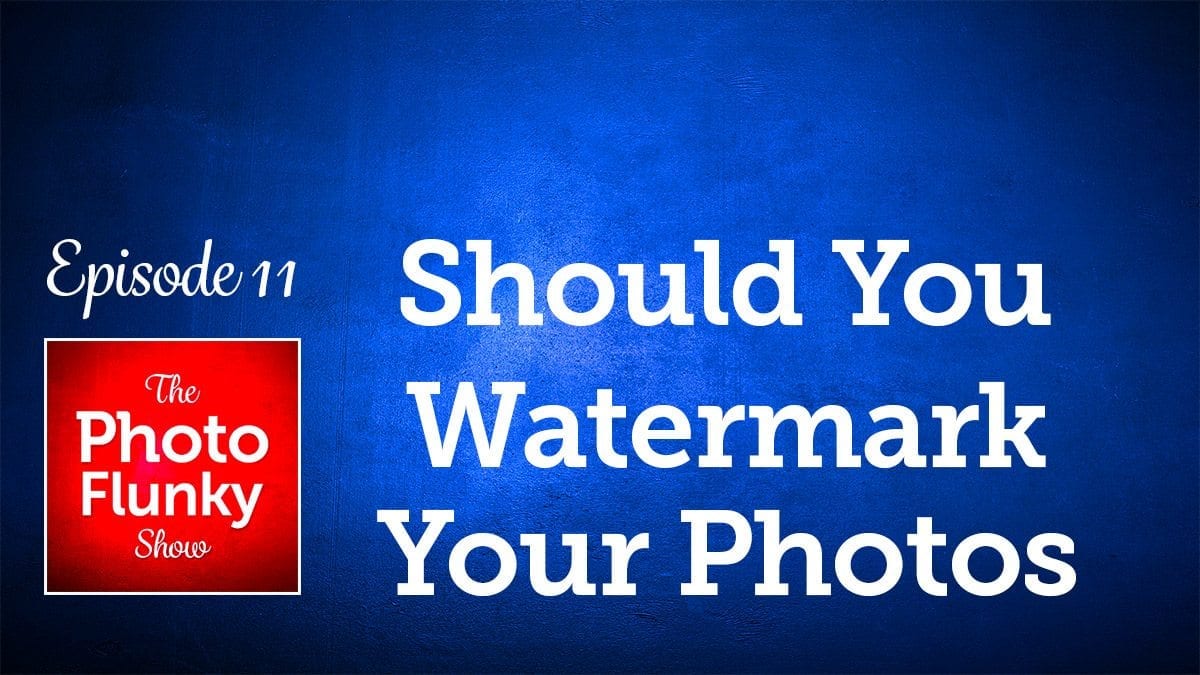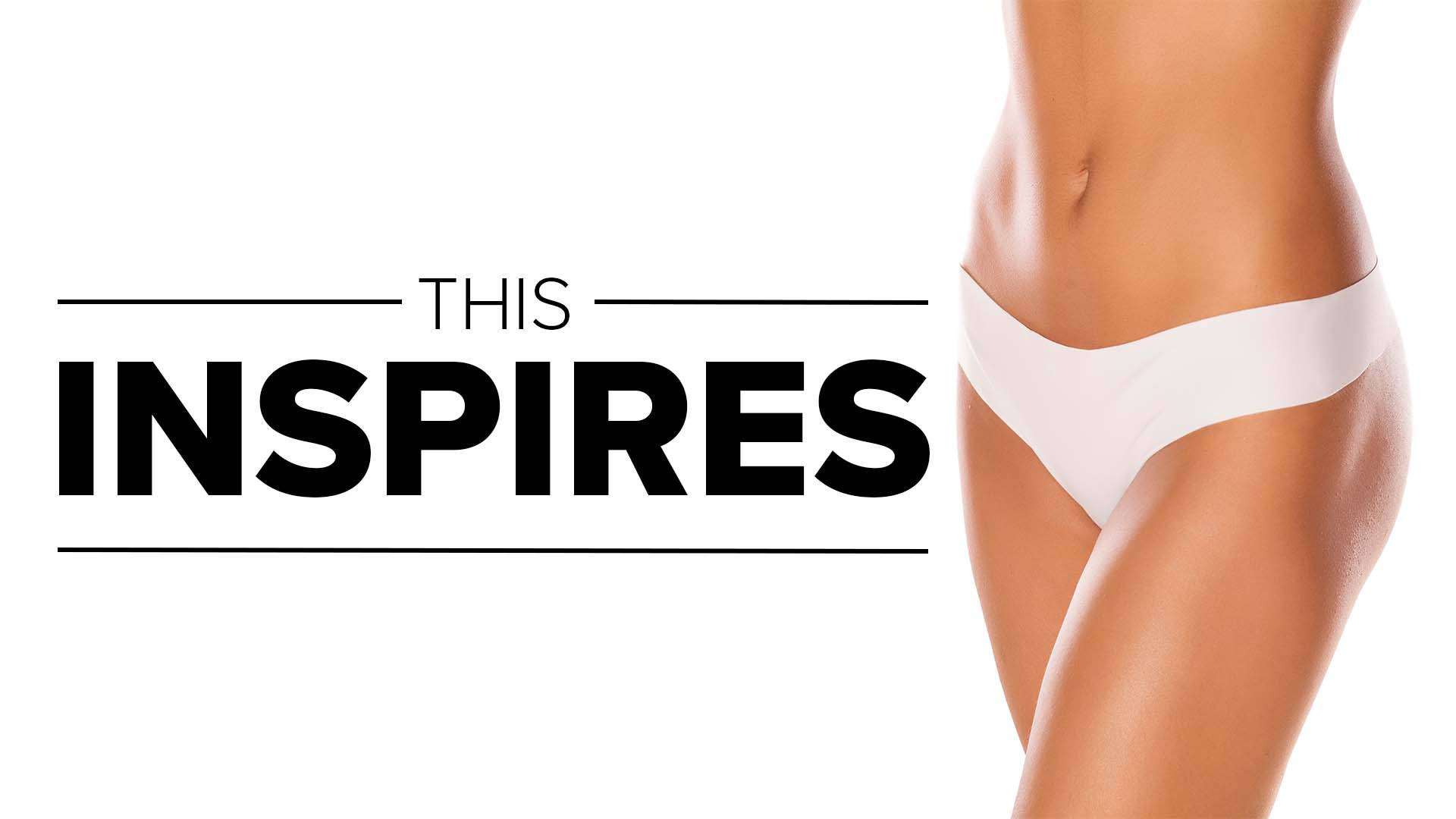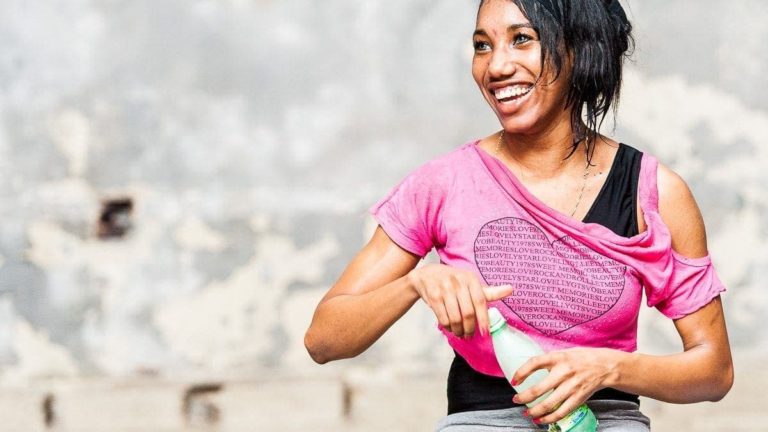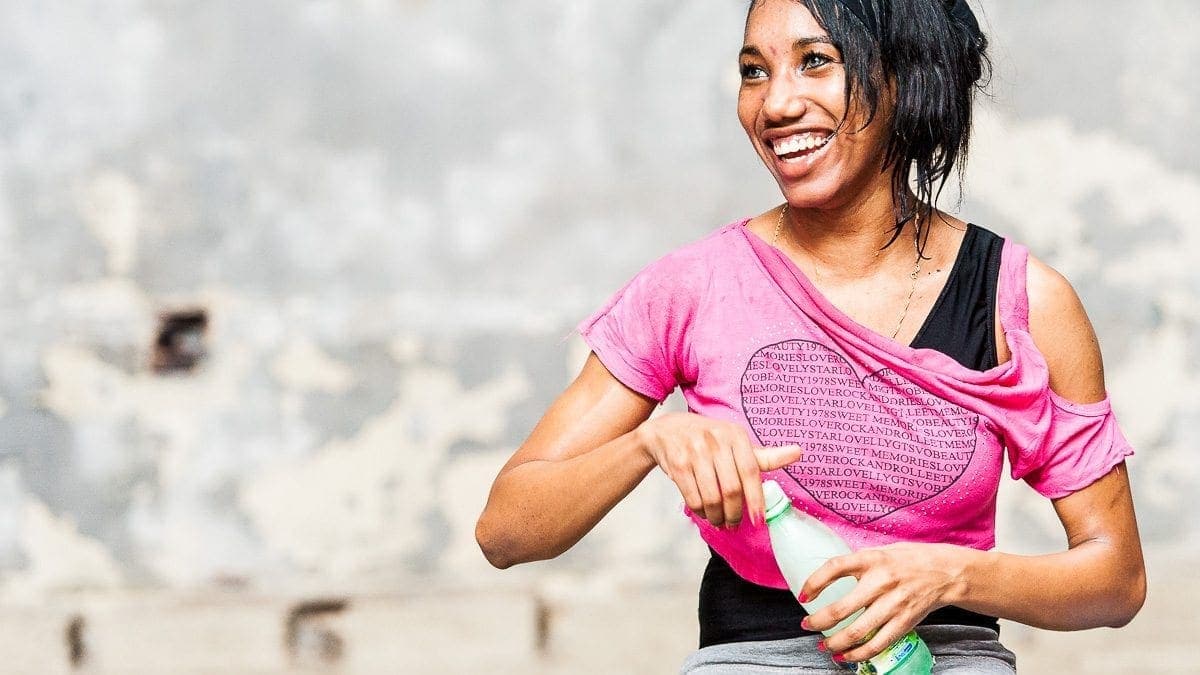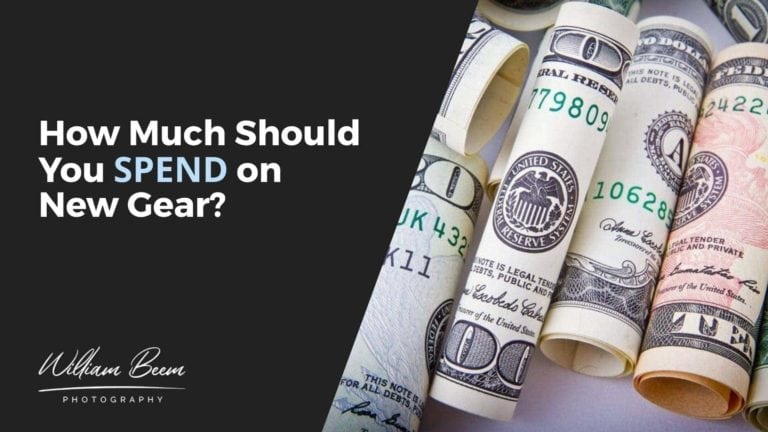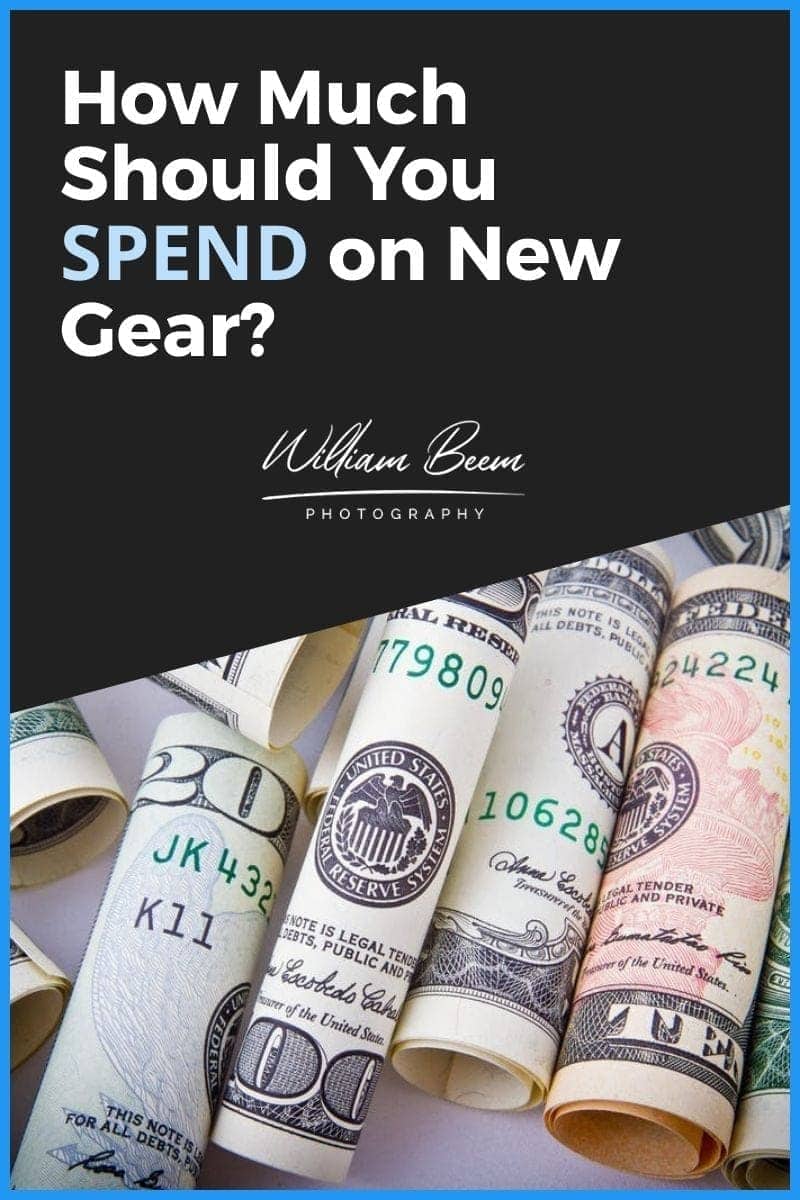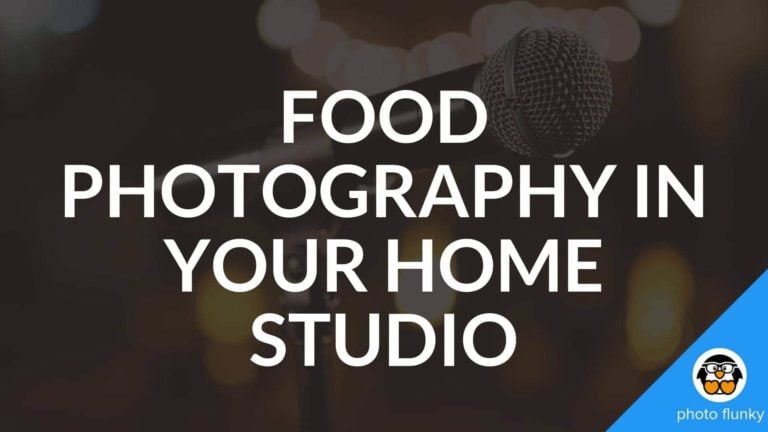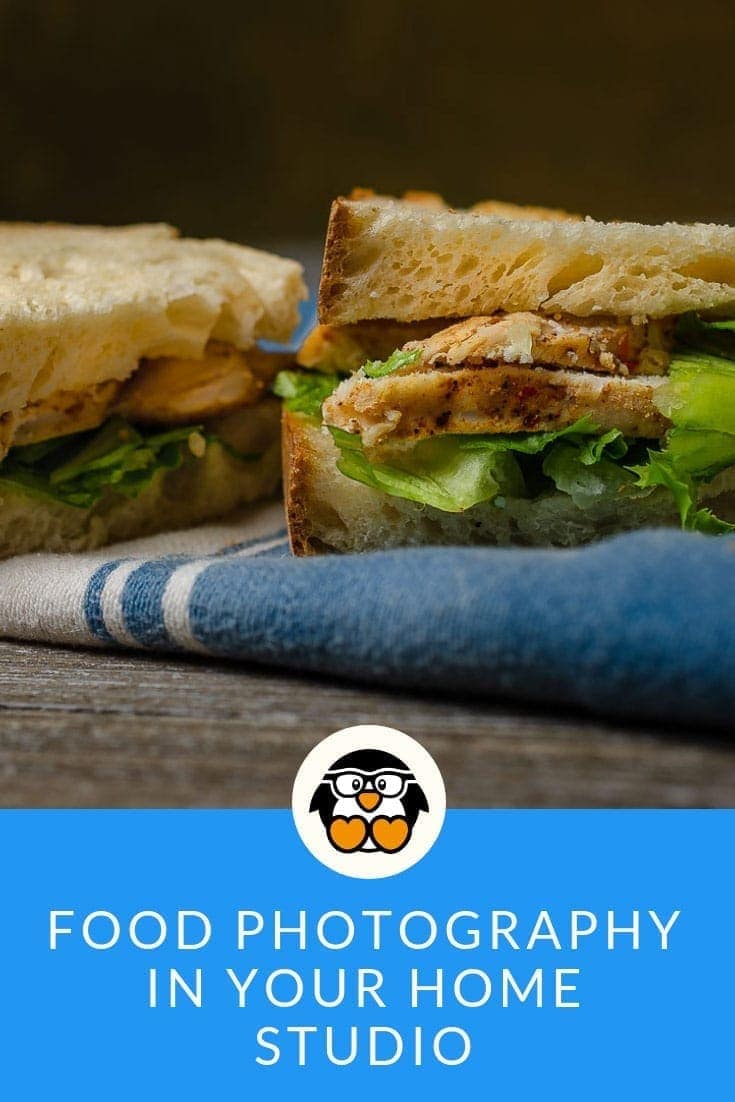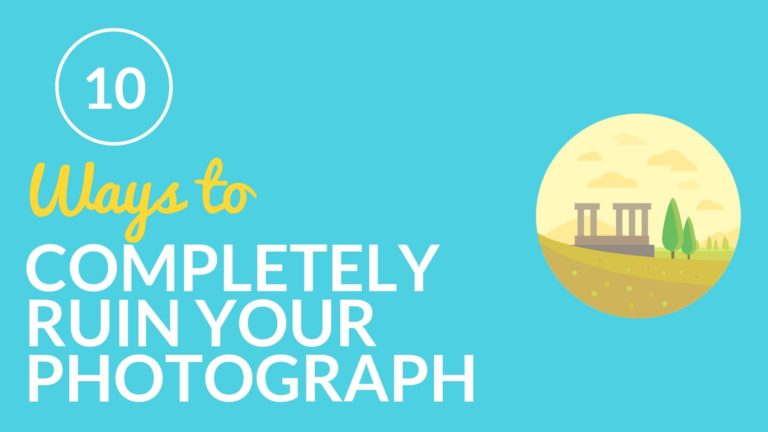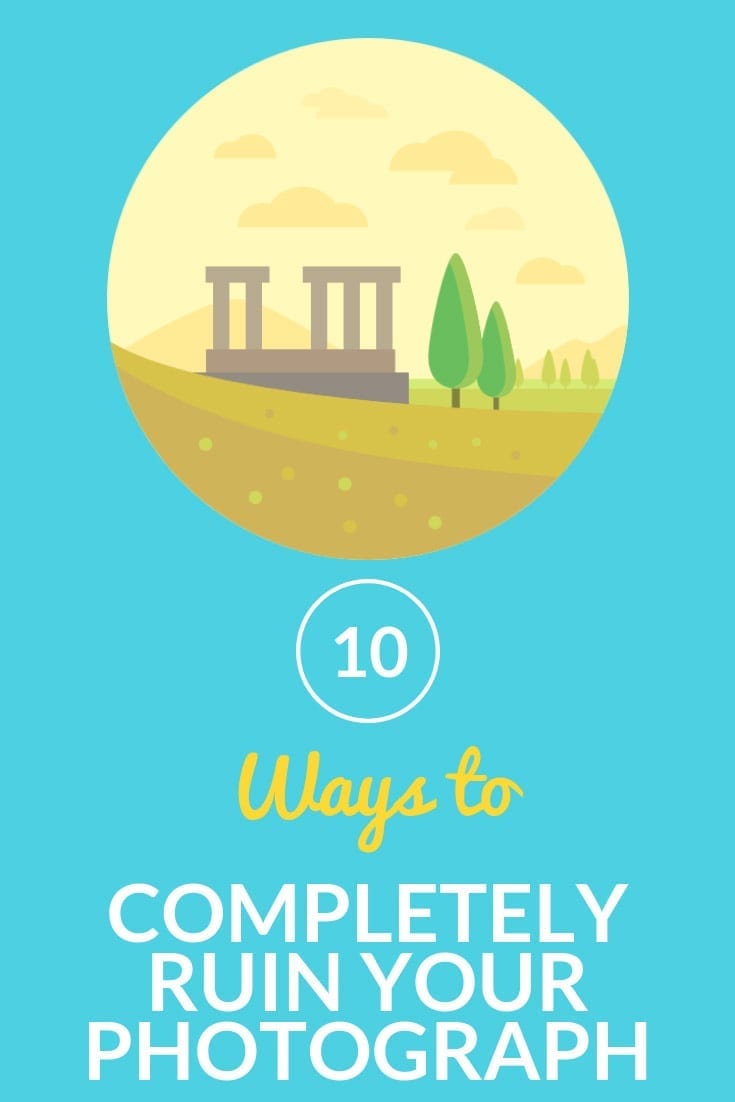Affiliate Disclosure: We earn a commission if you purchase through one of our links at no additional cost to you.
Black and White Photography: Is It Overused or Overrated?
Thank you for listening to episode 26 of The Photo Flunky Show – Is Black and White Photography Overrated?
We’ve all seen some really great black and white photography, but is it necessary or useful in a modern age? After all, every digital camera defaults to color photography.
Why are some people still using black and white for their photography?
It’s not that we don’t like black & white photography. It does a great job of eliminating color as a distraction and allowing you to focus on form. However, it isn’t a cure-all technique to turn a bad photo int instant art. There is a time and place for black and white photography.
Lee and I discuss how black and white photography fits in the realm of modern photography. We’ll cover the types of photos that work very well in black and white, and also discuss when black and white is a mistake for your photos.
Do you agree or disagree? Let us know in the comments below.
Subscribe to The Photo Flunky Show
Thank you for listening to The Photo Flunky Show. Make sure you get every episode by subscribing.
iTunes – https://williambeem.com/itunes
Stitcher – https://williambeem.com/stitcher
Google Play – https://williambeem.com/googleplay
Blubrry – https://williambeem.com/blubrry
Transcript
Hi, welcome to the Photo Flunky Show, Episode number twenty-six.
The question we have for you today: Is black and white photography overrated?
Thank you for listening to the Photo Flunky Show. My name is William Beem.
Lee: Hi, I’m Lee.
William: We have free show notes available for you at williambeem.com/episode26. And of course you can find a transcript of the show there. You can also go to photoflunky.com and find links to subscribe to the show on iTunes, Stitcher Radio, Google Play Music (I still get that one confused). We would really appreciate it if you would subscribe to the show. It means a lot to us.
Alright, before we get started I’ve got a discount code for you for Topaz Labs. They’ve got a coupon code for a fifteen per cent discount. You go to williambeem.com/topazlabs and when you’re ready to check out, use the coupon code WBEEMPHOTO and that will give you a fifteen per cent discount. It can save you a little bit of money.
Let’s get into this little topic. Is black and white photography overrated? This kind of came up because of something I saw recently. I was watching somebody who was following around a group of folks and everything that he did as part of his story was all black and white and I looked at it and I thought, why is that? This is the modern 2016 street photography kind of thing. Everything is in black and white. But the default that you get from every camera these days is color. So why is everything for this whole series in black and white? What is that really going to do for you?
Lee: My thought is he had a trend. He had a little, like an ID mark, on his style or whatever that project was and for whatever reason he had chosen it (I don’t know why. I didn’t see the things).
William: This is someone who has been to art school and I’m beginning to wonder, are people using black and white just to be artsy or moody?
Lee: I think sometimes that is the case. There is a bit of an intrigue about black and white.
William: Really? What is the intrigue?
Lee: It’s not common. And like you say, when something is not the default, people get curious.
I know that there was a time a little while ago – maybe about five or six years ago – when I noticed that all baby photos, everyone seemed to be doing them in sepia or black and white and I wasn’t quite sure why. There are times when it works for portraits, but it just seemed to be a bit of a trend.
William: I’m not against black and white. As a matter of fact on my desktop I’ve got background photos that are portraits that are black and white and I really appreciate them.
Mostly I have those on my computer as a desktop background because they are simple, there is not a lot of distraction to them and they’ve got negative space that I want for a desktop background. It works for that so I can have icons on the side without having a cluttered photo behind them.
My thought of black and white photography in a modern age is it works best when it is a very simple subject. You have black and white and all the little gradations between. I’m thinking the subject needs to be equally simple. But when I see a modern street shot in black and white, I’m thinking, what’s really the purpose there?
Lee: Are you talking about street photography?
William: I’m talking about any kind of photography. If you’re going to do black and white as an artistic statement, what is really driving you for that?
Lee: You know that I have a little bit of a history where I experimented with street photography, so I spent a lot of time looking at other people’s work and I did notice that black and white seemed to be – I don’t want to say the default trend – but it’s more common than anywhere else that I’d noticed it.
There are times when it works really well. The photos that I really appreciated and spent some time looking through, where I went to see what else the photographer had on his profile ... they were very simple, sometimes close up, but very simple photos. And those work well with black and white, but I think what has happened is people see something and they think, oh well I’m a street photographer now so everything goes in black and white and that makes me a street photographer. It may not be true, but their perception is reality and that’s it.
William: It could be. I guess I’m looking at black and white photography just thinking most of it is probably pointless. At least, when I look at it, I don’t see the point of it.
I see the point of black and white photography when you’re really trying to isolate something. I see it as if you’re taking away the color, you’re literally trying to strip away something out of the photo so you can concentrate on your subject and that’s why I like it for the portraits that I have. Like I said, this is very simple, of somebody, whether it be a model or another example I’ve got which is a portrait of one of my dogs. It is just my subject; it is stripped away of all the color and you just see the form.
Lee: Portraits, plain backgrounds and very simple subjects – architecture, I think, if it’s not too busy can also work very well in black and white.
William: I’ve seen some architecture photos I like where they are stripping away the color and you’re really looking at the lines. Particularly for high rises. If you did a black and white photo of my house it wouldn’t help in the slightest. If you’re going to do a downtown urban core where you’ve got tall buildings, there is symmetry, there are lines and you want to strip away all the noise and you just want to concentrate on that, I see black and white for that. Again, to me that is simplifying something by eliminating color and the noise that can kind of go with color.
And of course you’re looking at your color contrast. I love color photos that have contrast. Like when we see it in movie posters all the time where they are doing the teal and orange sort of colors for the contrast you can see there. With black and white you know you’re going to have contrast, so long as you’ve got enough black and you’ve got enough white or close to it.
Lee: It’s surprising how many people miss the mark. I’ve done it sometimes where I’ve taken something with black and white in mind, I’ve had a vision of what I want the finished photo to look like in black and white and come back and the contrast just hasn’t been quite what I want it to be and it doesn’t work.
William: I think if you’re going to do this in black and white or take a photo in black and white, you can’t just necessarily hit the button and say, OK I am going from color to black and white and accept the default. You really need to go in there and tweak – I guess your highlights, your midtones and your shadows – to say how much contrast do I want in each of these areas and how much clarity do I want in each of these areas?
Lee: That’s true. And also I think that there are two ways to do a black and white photo. It’s when it’s been planned and you see your photo. You see through your little frame in black and white and if you’re looking in black and white, you’re probably going to have a better chance of a success if it’s planned.
And then there is black and white where you use it to remedy something.
William: And that’s one of the things I hate! If you’ve got a bad photo and you think you’re going to take it in Photoshop or some other tool and just do some post processing to save it, usually a bad photo is a bad photo.
Lee: Well, yes. And also even a good photo that could look great in black and white is not as simple as just hitting the “convert to black and white”. If you go into [most people have Lightroom, so that would be a good place to use as an example], so if you go into the black and white and you go into the color panel and you start moving those color sliders around, you see how it affects the light and the shades in the black and white photo and you need to do more tweaking than just accept the default.
William: I agree. And my experience is ninety per cent of the photos that I have, if I were to just hit the letter V, which for some reason is black and white in Lightroom, if I hit the letter V and turn it into a black and white, it looks like crap!
Lee: Yeah, but I think you have that probably for the same reason that most of my black and white photos like that would look like crap because we see in color.
William: I do. And it’s not that I don’t appreciate a good black and white photo, but I think a good black and white photo is much more rare than a good color photo.
Lee: There is an art to seeing in black and white. Because that’s not a natural way, unless people have color blind issues.
William: That’s kind of what brings me back to documentary style photos in black and white. I don’t think it’s done because that’s the best way to present the subject. I think it’s done as an art school thing. Someone is being trendy or artsy or moody and that is not necessarily the best thing for the subject.
Lee: Do you think that sometimes when people are doing a documentary style, they think that black and white is being void of color and void of emotion and therefore it’s neutral?
William: You know it might be neutral, but is it relevant? I’m not sure that it really is. I love portraits in black and white. We talked about architectural photography with some tall buildings. I can see that. If you’re going to be shooting an historical subject, I get the urge sometimes to want to make it black and white because you’re used to seeing it that way.
Let’s say an old airplane. I’ve been to the National Air and Space Museum in Washington DC and the other one in Virginia. There are a lot of old airplanes and relics there that you know by heart some of the old photographs of those are in black and white because that’s really all they had.
And then some people, I think, are compelled to want to try and take black and white photos of old subjects, but I never did. I looked at them and thought, look at the glorious color that you never got out of these old photos!
Lee: Well I look at that as well. I look at something old in today’s world and think this is something from the past that has survived so I like to capture the color. It’s almost the best of both worlds, quite literally.
But I think some people like to take their viewer back or use it to transport themselves into an era gone by.
William: I guess I just don’t really relate to that so much. I’m living in a modern age, we have color; it’s the default right now. If you’re going to do something black and white, I think it needs to be something that really helps the viewer engage with the photo.
Turning something to black and white just because it’s old, I don’t think is really a good thing. So that kind of brings back the question for certain subjects: is black and white better than color?
Lee: I think that depends.
William: Is it a matter of genre or a matter of subject?
Lee: I think it’s probably a little bit of both. I’d say it’s more a matter of subject and how the subject is captured.
I think black and white – there is definitely an art to capturing black and white. It’s a lot more difficult to get a good black and white photo than it is to get a good color photo, in my opinion.
I think that the people who do get them – and there are some beautiful black and white photos out there – the people who do them well really do them well! And there are some photographers who are known for their black and white work. But they have trained their eye or they just have a natural ability to see things in black and white and to isolate subjects in a way that most of us aren’t able to do.
William: Alright, let’s think of some of the trends. A lot of wedding photography these days seems to have – maybe not all – at least some shots that are going to be black and white.
Lee: That’s true. And what did I say about our wedding photos?
William: No black and white! Absolutely not! And specifically no black and white with selective color in them.
Lee: Yes! That’s another thing. Absolutely not allowed!
William: But think about it. We got married. You said no black and white. What was really driving you with that?
Lee: I had a red dress!
William: Exactly! It was a bold, beautiful red dress and if someone were to turn that to black and white, it would look like a muddy gray.
Lee: I mean, just the portrait, if it was just the face, I didn’t really have an issue with that and I think we did get one or two of those that were beautifully done where it was just faces. But a photo of me in black and white with my red dress?
William: I don’t think we shared any of our photos that were in black and white.
Lee: We didn’t.
William: We shared some of the ones that were in color. We haven’t put them all over the place, but they didn’t even grab us enough really to say, “Oh, you must take a look at this.”
Lee: No, I just remember how furious I was about that one of me walking into the chapel. As I walked in they had taken a photo of me in black and white and I don’t know what happened, but it was only in black and white. There was no color version.
And it was the only photo as I walked in the door. I was absolutely furious.
William: I know. It’s like you’re backlit by the sun, you’ve got this nice small little chapel with warm colors inside of it, you’ve got this brilliant red dress and they reduced it all to black and white and just, in my mind, kind of lost the moment with that.
Lee: They did. And you get over it.
William: No, I don’t think you sound like you got over it yet.
Let me jump ahead a little bit and you’ve kind of answered this already, but when is black and white a mistake?
Lee: There are times when color is a mistake; there are times when a photo is a mistake. Black and white is not a solution to a bad color photo. You’ve already touched on this.
So when your white balance is out and you just don’t seem to be able to get it right in post processing or if you’ve got too much flare or too much contrast in the highlights or a bit blown out, black and white is not going to fix that. In fact, it’s probably going to make it worse.
William: One of the fixes I’ve heard, and this was coming back from a concert photographer, is because you know they’ve got all sorts of light. Sometimes you’ve got a really nice shot and then there is purple light on the guy’s face and you just can’t really fix that. And a lot of concert photographers will come back and say, “Turn it to black and white.”
Then you see what the image is like without that distracting color and sometimes that works.
Lee: I think that can work. Sometimes when the only problem with the photo is a color cast and you just cannot seem to get it where you need it to be, black and white can work.
William: To me it depends though. If you’ve got a shot of an isolated subject. Let’s say you’ve got a guitar player or a singer and you’ve got their face and their face is purple and that’s really your main subject, I see turning that to black and white. You’ve got an isolated subject.
But if you’re shooting the entire stage and there is color and there is equipment and all sorts of different shades of things and you turn that to black and white, I think you lose your main subject in the many shades of gray that you’re going to have in that cluttered environment.
Lee: That’s true. Look, we’ve already said that for black and white to really stand out you want something simple and I think you’re going to go back to that anyway. So black and white is going to be a mistake if it’s too busy.
Not all photos that are busy are a mistake. Sometimes they are that way by design. But you throw a couple of kids or a group of maybe ten kids onto a bouncy castle at a birthday party with all their bright colored things and throw some little plastic balls from a ball pit in there, get them jumping up and down, get some action in there, take a photo .... it’s a busy photo. I would not put it in black and white, but I think in color that captures the mood.
William: Well it does, and it’s because color is the subject in a way, sometimes.
Lee: Yes.
William: You want that photo because of all the brightly colored little balls in there, plus the kids. That’s the subject: the energy and the color that’s going on. That’s probably what attracted you to take the photo in the first place.
If you’ve got something bright and colorful, even with a bunch of mixed colors, so long as they work together, taking that color away just means you’re going to have so many shades of gray and you’ve got a bunch of ugly balls there. What’s really the story if you take that kind of bouncy castle or ball pit photo and turn it into black and white? It’s not like the documentary that you really want to share.
Lee: No, absolutely not! But detail photos can work really nicely in black and white. If you are coming into something simple like a badge or a simple white cup with black coffee and a teaspoon and a saucer sitting on a mat, if you’re into still lifes and things like that, that would work really well in black and white if you light it properly.
William: Maybe, but you know what? I think it might work better in color. We’ve got a lot of coffee drinkers out there that if you give them a nice little still life of coffee with the color of the coffee in color, it’s going to resonate much better than the black and white image of a cup of coffee.
You see that black and white where you’ve got a white mug and coffee inside of it, you’re kind of thinking old school 1950’s diner. Whereas you see a nice table setting with maybe a bit of a shade to the mug, you see the shade of the coffee inside of it and it brings up different thoughts and memories. It hits different parts of your brain.
Lee: Well I’m a big coffee drinker so I look at the color version and think, OK the coffee is strong or not strong enough. I look at the black and white version and I think, “It’s cold.”
I do think that it can work. It’s not my preference, but that doesn’t mean that I won’t appreciate something that does work and I have seen things that are not to my taste, but I can acknowledge that it’s a job well done.
William: I keep coming back to architecture and very simple portraits. I have got a series in mind of portraits that I really would like to do in black and white where you really don’t see anything except for a dark background and then the light falling off on the model in a certain way. I want to see shadows and form and that’s interesting to me.
If you’re going to outline something, if you’re going to silhouette something, if you’re going to just show the form of the person or let’s say it’s a subject like guitars or whatever, I get that that sort of thing because you’re playing with the light and color is getting in your way.
Lee: Yes, and clean edges and definition for black and white are also very important. You want to be very sharp and it’s not to say that you shouldn’t be sharp in color, but I think sometimes color can be a bit more forgiving than black and white.
William: Alright, let’s talk about different genres and I know you’re not a fan of landscape photography.
Lee: Nah.
William: But can you think of an example of landscape photography that you want to see in black and white instead of color?
Lee: Absolutely not. The world is naturally made in color. That’s my take on it. Things that we’ve built – so architecture and those kinds of things, or maybe an animal or a pet against a plain background would work. But nature has color. That’s the way it is.
William: And a lot of landscape photographers like to look back to Ansel Adams as their hero and Ansel took beautiful photographs, and black and white was mostly what he worked with. He had some color photography, but he is known for his black and white photography.
But I look at when I’ve traveled to some of the environments and look around and I’m thinking how could you take away this beautiful sunset sky?
Lee: You show me a black and white sunset, I’m afraid I’m not going to give you a “like.” I might like you, but I’m not going to like your photo.
William: Yeah and there is just so much color in the world and it may be too noisy if you try to shoot all of it, but if you isolate it down and use your color and your composition in an interesting way, I’m going to favor that much more than I would black and white.
Lee: Oh, absolutely!
William: Travel photography. Let’s go beyond travel photography. Let’s go straight into food photography. What food looks good in black and white?
Lee: In my opinion, nothing. I like my food photography –that’s both taking the photos and viewing photos - I like to be on the warm side. There might be an exception with some ice cold drinks or something, but on the whole, I want a kind of warm feel to the photos. I don’t want the stuff to look harsh and ....black and white food? I don’t know. I don’t think I eat anything black and white. White ice-cream?
William: Oreos!
Lee: Well, they are not black.
William: You’re right.
OK, so let’s go back to travel. You’re here in Orlando. We take a lot of photos of both traditional kinds of vacation spots. We’ve been to Las Vegas. Is there anything in those places that you think would look really good in black and white?
Lee: I don’t think so. I know I always tell you about the Disney photos just because I have so many thousands of them, but I did go and watch the Festival of the Lion King, the show at the Animal Kingdom. Now I love that show. It was something that we did on every visit at least once, usually more than that and one of the times that we would go and watch it each trip I would try and get some photos. They have a fire dancer there. He is really good and I used to always try and get a good shot of the fire dancer.
I’ve got a few photos, but there was one in particular that I really like. There was a lot of yellow in the photo, but as soon as I corrected the yellow, there were other parts of the photo that suffered and I just couldn’t seem to get this thing right and by working on it, it took me some time, but putting it into black and white really did resolve most of the problems.
Now I would have preferred it in color; it’s one of the rare exceptions when I loved the black and white photo. Is it a black and white shot? No. Ideally it should have been shot in color, but I just didn’t get it right.
William: Alright, so you’re trying to fix a photo.
Lee: Yeah.
William: It works in black and white to your satisfaction, but it’s not your preference.
Lee: It’s not my preference. I mean it saved a photo I really wanted to keep. The only issues in that photo were color issues and I think that was the thing. I had it sharp enough, the noise wasn’t terrible (I was shooting wide open with high ISO and it was quite dark). Everything was fixable except this horrible color cast.
William: OK, let’s move onto the next genre. You said you’ve done some street photography in the past and I’ve dabbled in it and I really stink at it. And there are times that I did street photography and just because I’ve seen so much street photography in black and white, I converted a scene in Cuba.
I was out in the pre-dawn hours with a bunch of other folks. We were going on a photo walk and they were all in front of me and I took the shot and I turned it to black and white and I think I did it because the color of the scene didn’t seem to isolate them. But once I turned it to black and white they were almost silhouettes in front of me and that gave me a stronger sense of “I’m out with these people.” That’s why I did it.
What do you think? Is street photography in general supposed to be in black and white? If so, why?
Lee: I don’t think it’s supposed to be in black and white. It really is personal preference, but it goes beyond that. You need to consider very carefully. I preferred my street photography in color because that says something about who I am and I think street photography is really not always just about the photo; it’s about the experience and it’s about expression and sometimes that’s expressing who you are in the way that you see things.
Now, for me, I see things and I love my color. So it makes sense for me to try and take color photos. There were times that black and white worked for me. For example, I remember taking a picture of a guy playing a banjo or something and he was sitting on an old wooden tomato crate of something like that. He had a big loose, floppy hat on that was sort of hanging down over his eyes in winter; it was like a knitted cap and although the background was nice and blurry, there was a lot of bright color and maybe some graffiti on the walls behind him. It just made it too busy.
So when I took that photo I was thinking black and white and what I did was I took a few shots of him and then I just zoomed in and I got his hands as he was playing, plucking on the strings and I just got the one hand on the strings. That worked in black and white. The other one was better in black and white than color, but I didn’t keep it.
William: So when something works in black and white rather than color, what’s really driving you? Is it that the colors are too scattered all over the place, or noisy, or are they taking away from the subject, or is black and white adding something to the subject?
Lee: No, I think it’s to avoid the distraction. The colors were drawing your eyes away from the subject. There was really nothing you could do about it, but crop and you can only crop so far on somebody’s face without taking their head off!
William: OK.
Lee: So, I just changed my focus completely and went for the hands because it didn’t seem to matter if they weren’t in color.
William: No, and I get that and sometimes taking away the color lets you concentrate on other things. You can see the texture in someone’s hands and you can concentrate on that without worrying about the color of it. Particularly if someone’s hands have some discoloration; then suddenly you just see the textures and you’re kind of changing what the photo is about when you are taking away the color and converting it to black and white.
Lee: Yeah, I mean a photo like that I don’t look at it as, “Oh, somebody’s playing some music.” It’s somebody expressing himself or maybe trying to earn a living. You look at those hands and there’s a story in there and you leave that for your viewer to interpret as they will. But I think the color can be a distraction.
William: Generally speaking, any kind of photography you can think of, color is the default and then black and white is when it helps tell the story.
Lee: It is and I think there are times when black and white can make something special. I mean there are some black and white portraits that are just shot for black and white and you don’t want to have them any other way.
William: Well that’s why I like it for portraits. I really want to isolate the subject and if I’m going to shoot a portrait in black and white, I don’t want something with a bright patterned dress or top on.
Lee: No.
William: Because you want something simple; you want something clean and it doesn’t matter really what color it is, so long as it’s not a bunch of colors together like a checkerboard pattern or some wild .....paisley! That’s what I’m talking about! I knew there was a word. I don’t use paisley very often!
But you know, if somebody shows up to a photo shoot in paisley, I’m thinking alright, you need to change your top, first off!
If the color on the paisley is very bright and that is part of the outfit or the look of what you are going for, it would really be a crime, I think, to shoot that in black and white.
Lee: It would, in my opinion. And you know this is the beautiful thing about photography. You’re going to take your photos the way that you want to take your photos. You take them the way you see things. So for one person looking at something in black and white, it doesn’t work for them; for the next person they don’t care for the color. Maybe there is too much or it’s all yellow and they hate yellow and prefer black and white just for that reason.
William: So that brings me back to what we talked about at the beginning. Is black and white being used these days mostly to help the photo or is it being used because someone wants to be artsy or moody?
Lee: People are trying to be artsy and moody.
William: Are they succeeding?
Lee: No, they are really screwing up in my opinion. But that is not everybody. Because I do want to say that there are some photographers out there who know what they are doing with black and white. They know what they are looking for, they know how to light the scene (if that’s what they are doing) and those who are able to do it, I think there is a talent to taking black and white photos and there are people who are very good at it. I am not one of them. Color is my thing, so let the people who are good at it do it. If somebody wants to learn, find out what makes it work.
William: And that’s really what I come back to as well. I love my color. I’m not afraid of taking something in black and white. The ones that I like in black and white, I really love. I think they are better in black and white for portraits if they are simple portraits.
Overall, I’d say color wins and black and white just sucks.
Thank you for listening to The Photo Flunky Show. Again, show notes are available at williambeem.com/episode26 or you can go to photoflunky.com and find all of our shows there.
You can find a transcript of the show for free at williambeem.com/episode26 and of course there are links to subscribe to the show.
Thanks very much for listening. We appreciate you and we’ll see you again next week.

